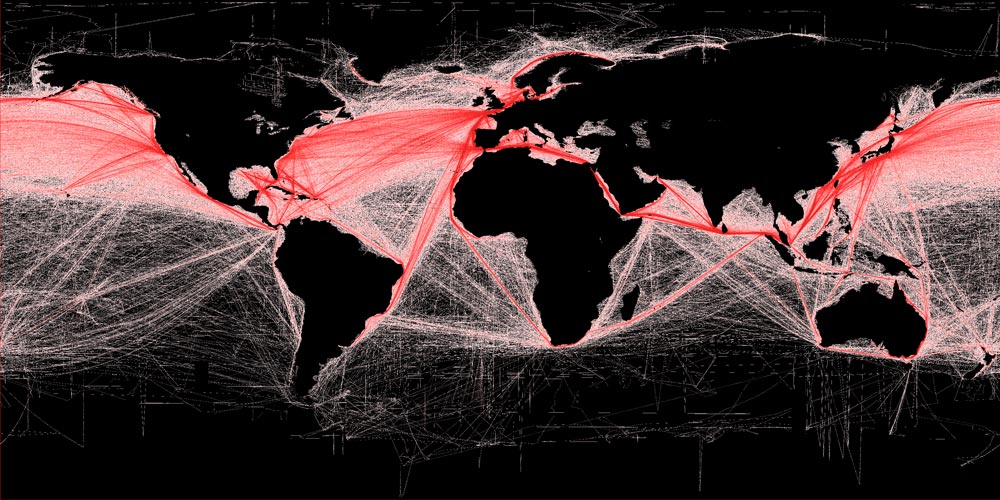
Opinion: African Swine Fever, should we be worried?
African Swine fever (ASF) appearing in China has been a hot topic in the agricultural news but should it hold a larger stage in the media?
ASF first reportedly appeared in China on August 1st 2018. Over the following weeks, three other outbreaks were reported in 3 separate provinces. These outbreaks have resulted in the total death and/or slaughtering of over 25,000 pigs.
In general, the reporting of the ASF outbreaks in China is not front page news, which is odd considering China is the world’s largest pork producer. The country produces an estimated 500 million pigs annually, half the world’s population of pigs. Pork also represent 60% of the animal protein consumed in China.
Incursion of a virus with no cure or vaccine when considering China’s astonishing production figures makes for a very concerning scenario. There has been speculation on how the virus entered China. Many believe it may have been through imported pig or pork products from neighboring countries affected by ASF. Although it is still unclear where the infection originated, there are rising concerns in the markets.
Can economy drive disease?
Between 1990 and 2011, due to the expediential rise in demand, the total value of China’s pig and pig product imports increased by a factor of 25 and pig meat by 20-fold. The increasing demand for pork products in China has increased the legal and illegal import of pork and pork products from other countries.
Due to raising tariffs with the United States, China’s import of products from other countries such as Russia has increased. Trade with ASFV positive countries such as Russia is illegal in China yet cities like Khabarovsk, which is 18 miles from the Chinese border, are frequented by Chinese delegations purchasing a variety of products including meat. Producers in Russia are not naive to this ever growing market and in areas surrounding Khabarovsk Russian farming conglomerates are building large pig breeding facilities to meet the demand.
Last year China bought over $1 billion dollars of food products from Russia, becoming the top importer of Russian food. This is great for Russia as increased sanctions from the U.S. continue to hurt the Russian economy. Food is evident throughout the politics of these two countries exampled by Russian president Vladimir Putin gifting a tub of Russian ice cream to China’s president Xi Jinping after Mr. Xi mentioned how much he liked it. Where there is a growing population in demand for food, money can be made.
It is still unclear how the outbreak began but one possible explanation is that is arrived from Russia. As a result of the outbreak more stringent biosecurity measures and checks are being employed. China’s demand for pork does not appear to be slowing, however, and with growing tariffs between the U.S. and China, Russia emerges as the foreseeable contender.
The Epoch Times
Wall Street Journal
Veterinary Record (PDF)
Cautions for the U.S.
The United States and China, despite rising tariffs, trade heavily with each other. A developed trade partner like China reporting ASF demonstrates the real risk of foreign animal disease incursion to the United States.
The United States imports a variety of feed products from China such as amino acids, mineral, vitamins, and soybean cakes which can harbor ASF. Economic forecasting projects ASF would cost the U.S. pork industry $8 billion in the first year of an outbreak.
Increased international movement of people also poses a risk for ASFV. Travelers moving from ASF positive countries into the United States can carry contaminated material or infected goods. The virus is very hardy and can survive for extreme conditions in the environment for prolonged periods of time.
Other trade products such as soy, which is used to supply the pig industry, are already feeling the effects of reduced and cancelled purchases from China due to rising tariffs. According to an article in the Wall Street Journal, due to China’s rising tariffs their future demand for U.S. pork is unclear.
There is a feeling of concern as China is one of the five largest overseas markets for the United States. Countries like Japan are already imposing import restriction on China due to ASF. Pressure from already rising tariff would be multiplied by export/import restriction and bans if ASF occurred in the U.S. This would have devastating effects not only on the U.S. pig and agricultural economy but the global trade economy.
National Pork Producers Council
The Veterinary Record (PDF)
Wall Street Journal
Questions, comments, feedback about today's Weekly Update? Please email Dr. Gus Brihn
Receive the Weekly Update right in your inbox on Tuesdays and Thursdays. Subscribe now at z.umn.edu/WeeklyUpdateSubscribe
